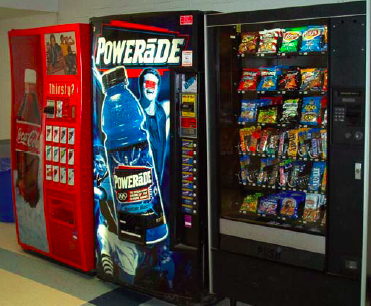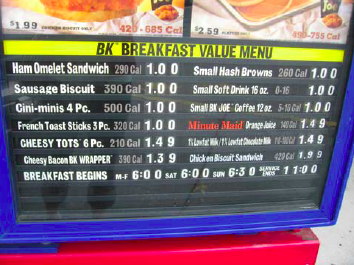Reducing junk food marketing to children: State and local policy options for advocates and policy makers
There are many state and local policy options to reduce junk food marketing to children. These policy changes can be accomplished through legislation, regulation, school wellness policies, media advocacy, contracts, voluntary agreements, zoning, litigation and other approaches. Here are some policy options to address junk food marketing in and near schools, in restaurants, and elsewhere in the community.
In addition to state and local efforts, federal level efforts are underway to change junk food marketing targeted at children through television, print, radio, and the Internet.

Policy options to address marketing in schools
- Institute a policy prohibiting the sale of low nutrition foods and beverages on school grounds.
- Restrict commercial marketing of low nutrition foods and beverages, as well as brands associated with unhealthy products, on school property.1
- Negotiate contract terms with vendors to limit the sale and marketing of low nutrition foods and beverages in schools.
- Prohibit fundraisers that involve the sale of low nutrition foods and beverages.
- Provide incentives for the sale of healthier foods and beverages in and near schools.
- Ban the sale of low nutrition foods and beverages near schools at all times during the school day, including before and after school.
- Institute closed campus policies to reduce children s exposure to unhealthy foods and beverages and marketing near schools.
For more information, go to: http://cspinet.org/new/pdf/resources_for_policy_options.pdf
 Policy options to address restaurant marketing
Policy options to address restaurant marketing
- Require restaurants with fewer than 20 outlets to list nutrition information for foods and beverages on menus and menu boards.
- Require restaurants and other food service establishments on government property to list nutrition information for foods and beverages on menus and menu boards.
- Require restaurants and other food service establishments in hospitals to list nutrition information for foods and beverages on menus and menu boards.
- Set nutrition standards for children’s meals that can include a toy or other incentive item.
- Use zoning policies to limit the number of fast food outlets near schools and other settings frequented by children.
For more information, go to: http://cspinet.org/new/pdf/resources_for_policy_options.pdf
Policy options to address marketing in other places in the community
- Levy state and local taxes on sugar sweetened beverages and use funds to pay for obesity prevention and other public health, nutrition, and physical activity programs.
- Implement policies that ensure healthy food offerings on government property.
- Require that check out areas of stores are free of candy, sugar sweetened beverages, and other low nutrition foods.
- Ban food sales in non food retail outlets.
- Prohibit the sale of low nutrition foods and beverages in zoos, children s museums, boys and girls clubs, athletic venues, and other settings frequented by children.
For more information, go to: http://cspinet.org/new/pdf/resources_for_policy_options.pdf
It is essential to research the legality of a proposed policy within each jurisdiction. All policies should include evaluation, monitoring and enforcement provisions.
